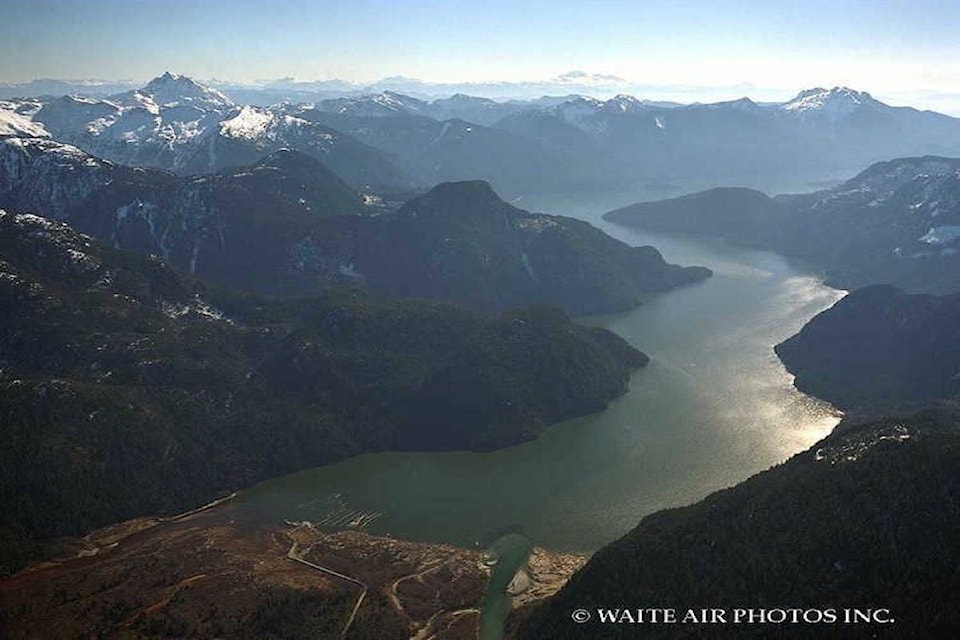By the 1880s, New Westminster was a well-established city. In 1866, it lost its status as the capital of British Columbia, but the Fraser River city did not become a backwater. In the 1860’s, it had been a transportation hub and an outfitting center, funneling thousands of people and huge quantities of supplies north to the Caribou during the gold rush, and after it remained an important river port and commercial center.
The legend of Slumac’s lost mine began in the 1880s. B.C. historian, Bill Barlee, said John Slumac appeared in New Westminster in 1887,1888, 1889 and again in 1890 with about 200 ounces of gold nuggets each year. Slumac was thought to have obtained the gold from a mine north of Pitt Lake.
Slumach entered the written record in the early 1890s. He lived north of New Westminster near the south shore of Pitt Lake, on lands that are now part of the Katzie First Nation. He was an indigenous man. Slumach’s long life had been crime-free, until he killed a man named Louis Bee in 1890. He was tried and found guilty of murder. Calls for clemency based on circumstances and his age and health were rejected, and sadly Slumac was executed in New Westminster on January 16 of 1891.
The Daily Columbian newspaper reported that the trial revealed, “that Louis Bee had been in the habit of taunting Slumac with being a sorcerer, a pagan, and a devil ….” Witnesses said a slight altercation occurred on September 8th of 1890, after which Slumac shot Bee, killing him instantly.
That much is not disputed, but some writers say that the lost mine story is only myth. It was not until years after Slumac’s death, detractors say, that the legend expanded to include the lost mine. Bill Barlee was a prolific researcher of western history. In one of his “Gold Trails and Ghost Towns” TV shows, he argued that the mine in the very rugged Pitt area was part of the lore long before that.
Barlee declared, “What happens is immediately after the death of Slumac, this rumour, this story about the lost mine, doesn’t die. So, for several years a number of individuals go up into that Pitt Lake region, and they look for it.” Barlee provided no sources, but he did detail the later search.
A man named Jackson from California arrived in New Westminster in 1901. He spent some time in the saloons, gathering information. He then disappeared into the Pitt Lake area, and did not return to New Westminster for three months. Barlee said he was a changed man; he was “emaciated and sick”. He had a heavy bag, and guarded it closely. Soon he rode south, never to return to the Pitt.
A proven B.C. prospector – Volcanic Brown – arrived in the area years later. In the 1890s, he had discovered an extremely rich copper deposit known as Copper Mountain. He did not hesitate to flaunt his wealth, and was entirely immodest, billing himself as “The best prospector in the world.”
Brown, after 1910, learned of a letter written by Jackson, and searched for it for a decade. He finally obtained the letter in 1923. Barlee, much later, viewed the letter Brown had acquired and believed it genuine. Barlee said the language included hard-rock mining terms and Americanisms, and it bore the stamp of the government agent in Grand Forks. (Brown submitted it in May of 1924).
The letter is intriguing. A copy appears on the excellent website www.Slumach.ca. Jackson explained that he was too ill to return to the Pitt area, and had no family. He said he wished to share the information of his find with his friend (to whom he wrote). The letter begins, “San Francisco Feb. 10 1904.” The letter is relatively long, but a brief quotation described Jackson’s discovery vividly.
“I came to a place where the bedrock was bare and there you can hardly believe me, but the bedrock was yellow with gold,” Jackson wrote. “In a few days I gathered thousands, and there were thousands more in sight. Some of the nuggets were as big as walnuts and … there were millions stowed away in the little cracks.” The letter included directions, but they were rather indistinct.
Volcanic Brown searched for this location for seven consecutive seasons from 1924 to 1930. He failed to emerge from the area in September of 1930 as planned. A search party located his abandoned camp and a small bottle of nuggets. Brown was never seen again.
The legend relates that Slumac, at his trial, said, “Nika memloose, mine memloose,” which means, ‘When I die the mine dies.’ Writers and story tellers interpreted this as “Slumac’s Curse.” More likely, Slumac was simply saying, if you condemn me to die, I will take my secret with me. The “curse” is only an effort jazz up the story. The story doesn’t need it.
Eleven men, by Barlee’s count, have perished in the search for Slumac’s gold. That was tragic. Death was all too common in the goldfields everywhere: on the Fraser River, in the Caribou, in the Klondike and in locations across the continent. The Pitt region, though, stands out; it is reputed to have some of the most unforgiving and dangerous terrain in the world.

Bruce W. Uzelman, based in Kelowna, holds interests in economics and political science.
